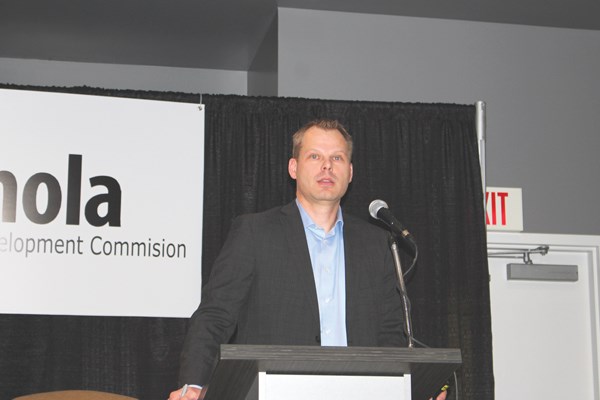Farmers need to know what profitability is to know how successful their farm is.
And getting a handle on that is not as clear cut as it might appear, said Kim Gerencser speaking at the Farm Fitness and Finance Forum at the Grain Millers Harvest Showdown.
“Profit is not a swear word,” began Gerencser who is with Growing Farm Profits.
But profits are also not a lot of other things, he said.
“It (profit) isn’t tractors and combines. It isn’t equity in land. It isn’t cash in the bank,” said Gerencser.
Ultimately a profit on a farm comes down to one line in a ledger, the retrieved earnings.
“That is your profit,” he said. “Analyzing year-over-year returned earnings is your profit.”
Gerencser said farmers also need to understand that some things are just a cost of doing business. In that regard taxes are not a bad thing.
“It is just a fact of doing business,” he said. “If you’re not paying some tax you’re not really profitable.”
In the case of profitability, it comes down to more than bushels of grain in the bin.
“There’s more to it than just production,” said Gerencser.
Gerencser suggested that simply pushing to produce more does not mean generating a profit.
“We haven’t got off the production train yet. We’re so focused on it,” he said.
Farm size is not a profit indicator either, said Gerencser, adding bigger is not also better.
“A farm is too big when it exceeds your ability to manage it,” he said.
What can make a farm more profitable are often small improvements.
Gerencser pointed to the five per cent rule, an idea first put forward by Danny Klinefelter at Texas A&M. It was his suggestion that by focusing on modest improvements over key areas can generate far greater end results overall.
So a five per cent increase in yield, coupled with a five per cent increase in price and a five per cent decrease in total farm costs will culminate “in an incredible net benefit to the farm,” said Gerencser.
Gerencser also said a farmer needs to be sure he knows his farm costs “right down to the paperclips.”
Paperclips may not be vital to production, but when you are savvy enough to have a handle on costs recognizing office supplies are a farm cost, you likely have a good handle on what your overall costs are, he said.
Gerencser told the story of a friend in the perogy business (Cheemo Perogies), who knew the costs to make a dozen perogies down to the tenth of a cent, which meant he knew exactly what his sale price had to be to recoup a profit.
“Generally the (ag) industry has not got there,” he said. “… We need to get there.”



